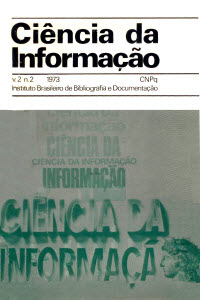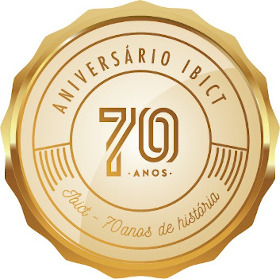Comportamento bibliométrico da língua portuguesa, como veículo de representação da informação
DOI:
https://doi.org/10.18225/ci.inf.v2i2.31Palavras-chave:
Comportamento bibliométricoResumo
As pesquisas em Ciência da Informação, orientadas para a Lingüística,apresentam interesse particular para a Bibliometria , que indica o tratamento quantitativo da comunicação escrita; entre as múltiplas aplicações da Bibliometria, encontram-se as pesquisas referentes à freqüência de palavras em determinado texto. Zipf, baseado em uma relação empírica observada por Estoup, formulou leis estabelecendo relações entre a ordem de série de uma palavra em ordem de freqüência, e a freqüência de seu aparecimento em um texto "suficientemente longo". Booth, estudou e desenvolveu a segunda lei de Zipf, menos conhecida do que a primeira, e referente a palavras de baixa freqüência. Estudando as duas leis de Zipf, W. Goffman derivou uma fórmula de transição, que indica, aproximadamente, as ordens de série nas quais se devem encontrar as palavras significativas de um texto em língua inglesa. As seguintes hipóteses foram levantadas: a primeira lei de Zipf é válida para a língua portuguesa; sua segunda lei e a fórmula de transição de Goffman são, também, válidas para a língua portuguesa, ou podem ser adaptadas a este idioma. Foram escolhidos três Textos, no campo da Biblio-grafia: Texto A, com 6395 palavras, sendo 1791 palavras diferentes; Texto B, com 2210 palavras, sendo 839 palavras diferentes; e Texto C, com 1290 palavras, sendo 535 palavras diferentes. Nestes textos, foram aplicadas as leis de Zipf e a fórmula de transição de Goffman, calculando-se suas respectivas fórmulas, e tentando-se obter variações da constante 2, válida para a língua inglesa, para maior precisão dos resultados. As conclusões foram as seguintes: a primeira lei de Zipf é valida para a língua portuguesa; sua segunda lei, tal como formulada, parece não ser valida para a língua portuguesa, mas pode ser adaptada a esse idioma; a fórmula de transição de Goffman, também, poderá sofrer uma adaptação para a língua portuguesa.
Abstract
The researches in Information Science oriented to Lingüistics have a particular interest to Biblio-metrics; the latter indicates the quantitative treatment of written communication; researches related to word frequency in a given text are found among several applications of Bibliometrics.Zipf propounded laws that establish relationships between the rank of a word in a frequency order, and the frequency of its appearance in a long enough text; his studies were based on an empirical relationship observed by Estoup.Booth studied and developed Zipf's second law, less known than the first one, which refers to low frequency words. W. Goffman studied Zipfs two laws and derived a transition formula which indicates approximatively the ranks in which significant words in a text in English must be found.The following hypothesis were expressed: Zipf's first law is valid for the Portuguese language; his second law and Goffman's transition formula are also valid for the Portuguese language, or they can be adapted to this language.Three texts in Portuguese dealing with Bibliography were chosen: Text A, with 6395 words, 1791 of which are different; Text B, with 2210 words, 839 of which are different; and Text C, with 1290 words, 535 of which are different.Zipf's laws and Goffman's transition formula were applied to these texts, and calculations were made to obtain variations of the constant 2 (valid for the English language), for finding more accurate results. The following conclusions were drawn: Zipf's first law is valid for Portuguese language; Zipf's second law, as well as Goffman's transition formula, do not seem to be valid for Portuguese language, but can be adapted to this language.
Downloads
Edição
Seção
Licença
- A publicação se reserva o direito de efetuar, nos originais, alterações de ordem normativa, ortográfica e gramatical, com vistas a manter o padrão culto da língua, respeitando, porém, o estilo dos autores;
- As provas finais não serão enviadas aos autores;
- Os autores mantém os direitos totais sobre seus trabalhos publicados na revista Ciência da Informação, ficando sua reimpressão total ou parcial, depósito ou republicação sujeita à indicação de primeira publicação na revista, por meio da Licença Pública 4.0 Internacional Atribuição-CompartilharIgual
- Deve ser consignada a fonte de publicação original;
- As opiniões emitidas pelos autores dos artigos são de sua exclusiva responsabilidade;
- Cada autor receberá dois exemplares da revista, caso esteja disponível no formato impresso.





























